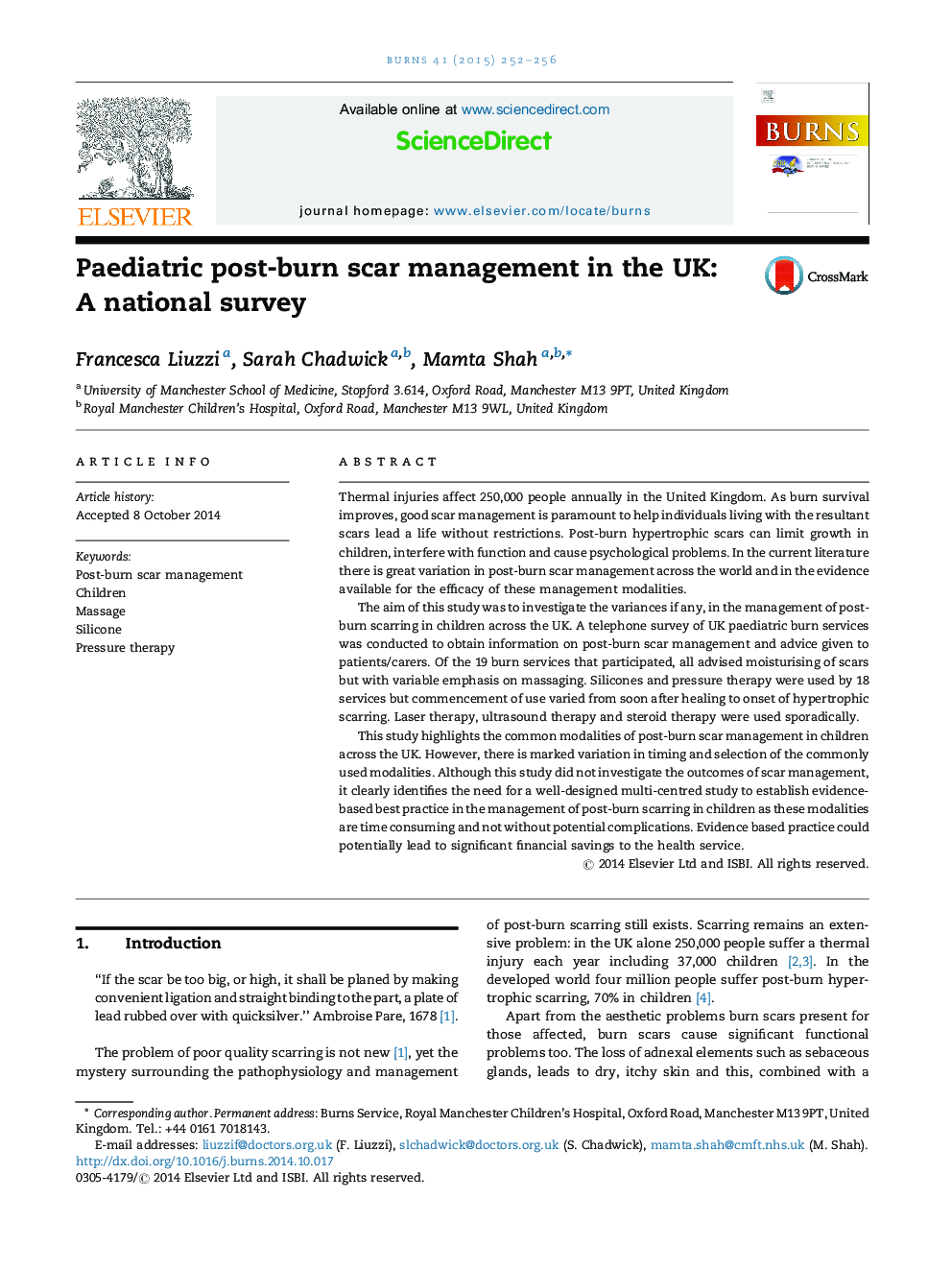| کد مقاله | کد نشریه | سال انتشار | مقاله انگلیسی | نسخه تمام متن |
|---|---|---|---|---|
| 3104438 | 1191651 | 2015 | 5 صفحه PDF | دانلود رایگان |
Thermal injuries affect 250,000 people annually in the United Kingdom. As burn survival improves, good scar management is paramount to help individuals living with the resultant scars lead a life without restrictions. Post-burn hypertrophic scars can limit growth in children, interfere with function and cause psychological problems. In the current literature there is great variation in post-burn scar management across the world and in the evidence available for the efficacy of these management modalities.The aim of this study was to investigate the variances if any, in the management of post-burn scarring in children across the UK. A telephone survey of UK paediatric burn services was conducted to obtain information on post-burn scar management and advice given to patients/carers. Of the 19 burn services that participated, all advised moisturising of scars but with variable emphasis on massaging. Silicones and pressure therapy were used by 18 services but commencement of use varied from soon after healing to onset of hypertrophic scarring. Laser therapy, ultrasound therapy and steroid therapy were used sporadically.This study highlights the common modalities of post-burn scar management in children across the UK. However, there is marked variation in timing and selection of the commonly used modalities. Although this study did not investigate the outcomes of scar management, it clearly identifies the need for a well-designed multi-centred study to establish evidence-based best practice in the management of post-burn scarring in children as these modalities are time consuming and not without potential complications. Evidence based practice could potentially lead to significant financial savings to the health service.
Journal: Burns - Volume 41, Issue 2, March 2015, Pages 252–256
